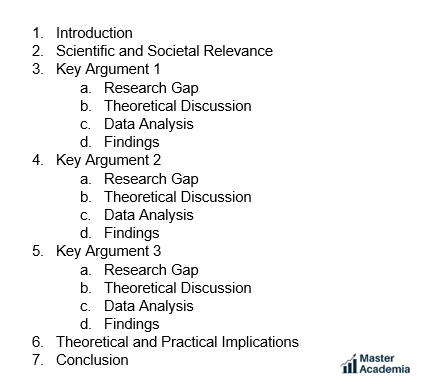

Most PhD vivas and PhD defences start with a short presentation by the candidate. The structure of these presentations is very important! There are several factors and approaches to consider when developing your viva presentation structure.
Contents
A PhD viva or PhD defence is often one of the last steps that PhD students have to pass before receiving a doctorate. The viva or defence usually starts with a short presentation of the PhD candidate on the PhD thesis.
Presenting a whole PhD in a short amount of time is very challenging. After all, a PhD is often the result of several years of work!
It is simply impossible to include everything in a viva presentation.
Therefore, tough choices have to be made in terms of what to include, what to highlight, and what to exclude.
The structure of a viva presentation plays a crucial role in bringing across the key messages of your PhD.
Therefore, there are several factors to consider when developing a viva presentation structure:
A very traditional viva presentation structure simply follows the structure of the PhD thesis.
This means that the viva presentation covers all parts of the thesis, including an introduction, the literature review, the methodology, results, conclusions, etcetera.

The advantage of this rather traditional format is that it provides information on each thesis chapter. Furthermore, it is relatively easy to prepare.
The disadvantage of this traditional format is that it is very challenging to fit all the information in a – let’s say – 10-minute presentation.
Furthermore, it can result in a presentation that is quite boring for the examiners, who have read the thesis in preparation for the viva.
One interesting way is to structure a viva presentation around the key findings of the PhD research.
For instance, you can select your three main findings which you each connect to the existing literature, your unique research approach and your (new) empirical insights.
 around key findings" width="" height="" />
around key findings" width="" height="" />
A viva presentation structure around key findings emphasises the unique contribution of a PhD thesis, particularly in empirical terms.
A challenge of this structure, however, is to narrow down the presentation to a handful of key findings.
Furthermore, it might be tricky to find enough time during the presentation to discuss your theoretical framework and embed your discussion in the existing literature when addressing complex issues.
A viva presentation structured around key arguments is very similar to one that is structured around key findings. However, while key findings place more emphasis on the empirical data, key arguments operate at a higher level:
Arguments are sets of reasons supporting an idea, which – in academia – often integrate theoretical and empirical insights.

So, for example, your key argument 1 is your stance on an issue, combining your theoretical and empirical understanding of it. You use the existing theory to understand your empirical data, and your empirical data analysis to develop your theoretical understanding.
A viva presentation structure around key arguments is probably the most difficult viva presentation structure to choose.
However, if it is well done, it is probably the most academically strong and advanced way of defending your PhD.
Another common way to structure a viva presentation is around case studies or study contexts.
This structure is only applicable when the PhD thesis includes a comparative (case study) analysis, which is quite common in the social sciences and humanities.
A presentation can, for instance, first discuss the theoretical framework and research approach, then present Case 1, and then Case 2 or more if applicable.

A viva presentation structure around case studies can be easy to follow for the audience, and shed light on the similarities and differences of cases.
However, as always, you need to reflect on whether the structure supports your key message. If your key message does not centre around similarities and/or differences in cases, this is not the structure for you!
Every PhD thesis is unique, and therefore also every viva presentation structure should be unique.
The key to a good viva presentation is to choose a structure which reflects the key points of your PhD thesis that you want to convey to the examiners.
The example viva presentation structures discussed here intend to showcase variety and possibilities and to provide inspiration.
Never just copy a viva presentation structure that worked for others.